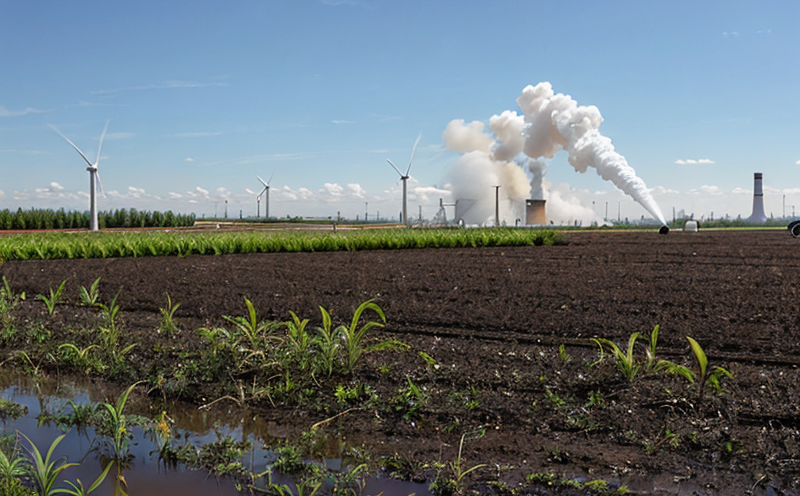Assessing the environmental impact of chemical residues in textiles
The Hidden Dangers of Chemical Residues in Textiles Assessing the Environmental Impact with Eurolab
As consumers become increasingly environmentally conscious, businesses are under pressure to ensure that their products meet the highest standards of sustainability. In the textile industry, one critical aspect of product safety and environmental responsibility is assessing the impact of chemical residues on the environment. At Eurolab, our team of expert scientists provides a comprehensive laboratory service to help companies like yours identify and mitigate the risks associated with chemical residues in textiles.
What is Assessing the Environmental Impact of Chemical Residues in Textiles?
Assessing the environmental impact of chemical residues in textiles involves analyzing the presence and concentration of various chemicals in fabric samples. This process helps businesses understand the potential harm that these substances can cause to humans, animals, and the environment if they are released during manufacturing, use, or disposal. Chemical residues in textiles can include a wide range of substances, such as
Heavy metals (e.g., lead, cadmium)
Volatile organic compounds (VOCs)
Flame retardants
Dyes and pigments
Pesticides
These chemicals can have significant environmental implications if not properly managed. For example, the release of heavy metals into wastewater can contaminate waterways and harm aquatic life.
Why is Assessing the Environmental Impact of Chemical Residues in Textiles Essential for Businesses?
Assessing the environmental impact of chemical residues in textiles is crucial for businesses to ensure compliance with regulatory requirements, maintain brand reputation, and reduce potential liabilities. Some key reasons why this service is essential include
Compliance with regulations Companies must adhere to strict guidelines set by governments and industry associations regarding chemical residue levels in textiles.
Consumer trust and loyalty Businesses that prioritize environmental responsibility can build strong relationships with consumers who share their values.
Risk management Identifying potential environmental hazards allows companies to take proactive measures to mitigate risks and avoid costly recalls or lawsuits.
Competitive advantage By demonstrating a commitment to sustainability, businesses can differentiate themselves in the market and appeal to eco-conscious customers.
Benefits of Using Eurolabs Assessing the Environmental Impact of Chemical Residues in Textiles Service
Our expert laboratory service provides numerous benefits for companies looking to assess the environmental impact of chemical residues in textiles. Some key advantages include
Accurate results Our team uses state-of-the-art equipment and methodologies to provide reliable and precise analysis.
Comprehensive scope We test a wide range of chemicals, including heavy metals, VOCs, flame retardants, dyes, and pesticides.
Quick turnaround times Our efficient sampling and testing procedures ensure rapid delivery of results, allowing companies to respond promptly to regulatory requirements or consumer concerns.
Expert interpretation Our team provides detailed analysis and recommendations for reducing chemical residues and minimizing environmental impact.
Cost-effective solutions By identifying potential issues early on, businesses can avoid costly recalls, repairs, or replacements.
Key Benefits of Assessing the Environmental Impact of Chemical Residues in Textiles
Reduced risk of regulatory non-compliance
Improved brand reputation through transparency and accountability
Enhanced consumer trust and loyalty
Cost savings through proactive risk management
Competitive advantage through demonstration of environmental responsibility
Frequently Asked Questions (FAQs)
Q What types of textiles can be analyzed for chemical residues?
A Our laboratory service can analyze a wide range of textile samples, including fabrics, clothing, upholstery, and industrial materials.
Q How do you collect and store textile samples for analysis?
A We follow strict protocols to ensure sample integrity and accuracy. Samples are typically collected in specialized containers or bags, and stored in our laboratory at ambient temperature.
Q What methods do you use to detect chemical residues in textiles?
A Our team employs state-of-the-art techniques, including chromatography (GC/MS, LC/MS), spectroscopy (ICP-MS, ICP-OES), and other specialized methods to identify and quantify various chemicals.
Q How long does the analysis process typically take?
A Turnaround times vary depending on the type of test and sample volume. However, we strive to deliver results within 3-7 business days.
Q Can you provide recommendations for reducing chemical residues in textiles?
A Yes! Our expert team can offer guidance on selecting safer chemicals, improving manufacturing processes, and implementing sustainable practices to minimize environmental impact.
Conclusion
Assessing the environmental impact of chemical residues in textiles is a critical aspect of product safety and environmental responsibility. At Eurolab, our laboratory service provides comprehensive analysis and expert interpretation to help businesses like yours identify and mitigate potential risks associated with chemical residues. By choosing Eurolabs Assessing the Environmental Impact of Chemical Residues in Textiles service, you can ensure compliance with regulations, maintain brand reputation, reduce risk, and gain a competitive advantage in the market. Contact us today to learn more about how our expert laboratory services can support your business needs.




